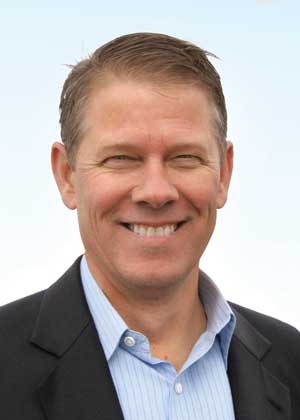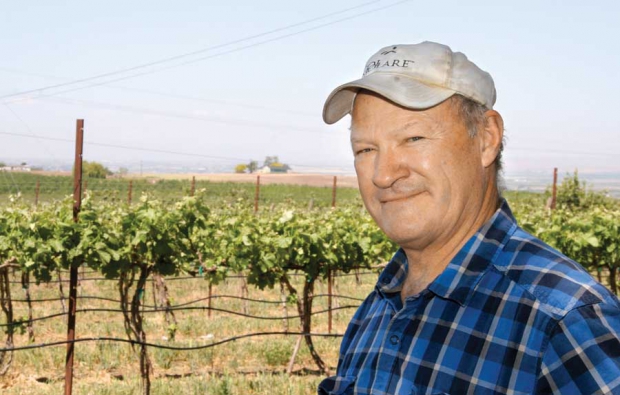Washington’s wine industry is stepping up its research investment in wine and grape research in a big way.

Steve Warner
The Washington Wine Commission has already significantly increased research funding from past years, but now it’s developing a plan that will lay the foundation for a comprehensive, first-ever research program. The commission hired Vicky Scharlau, 501 Consultants, to develop a five-year plan.
“I’m very excited about the future of research for Washington’s wine industry,” said Steve Warner, president of the Wine Commission. “Research is one of the main pillars of an industry.”
The Wine Commission has allocated more than 25 percent of total assessment funds for budget year 2015 toward research, according to Warner. The biggest allocation—about $1 million—is helping fund construction of Washington State University’s Wine Science Center. Another $250,000 is being spent on research for the 2015 budget year.
“I feel very strongly about research and the need to elevate the industry’s research involvement,” Warner told Good Fruit Grower, adding that the strategic plan will recommend how to best structure and implement a research program. The research program is on the Washington Wine Commission’s agenda on February 13, at 2:30 p.m., at the Three Rivers Convention Center in Kennewick, Washington.
Two key components of the program are communicating research with industry and seeking additional research dollars through grants and such.
Timing
Wine Commission board member Dick Boushey is chair of the Commission’s relatively new Research Committee. Boushey, grape and tree fruit grower from Grandview, has been a member of the Wine Advisory Committee for many years.
The Wine Advisory Committee, which became a subcommittee of the Wine Commission in 1998, is a volunteer committee of growers and winemakers that annually reviews and recommends funding of research proposals.
“It’s time—it’s more than time—to get an industry-wide research program going,” said Boushey in a phone interview. Boushey was part of an industry task force that developed a research plan and identified priorities nearly a decade ago. The task force was assembled by the Washington Association of Wine Grape Growers.

Dick Boushey
“But what the task force and plan never answered was who’s going to do the work and who’s going to administer the program,” Boushey said. “Nor did it identify a funding source.”
Washington’s wine industry has many organizations, he explained, from grape grower groups like WAWGG and the Washington State Grape Society, to wine organizations like the Washington Wine Institute and regional wine associations and industry wide groups like the Washington Wine Industry Foundation. But none has had a staff person dedicated to work on research.
Last spring, key industry leaders met to discuss a framework for a comprehensive research program, said Boushey. “What resulted was agreement that a program should be developed within an existing organization and not from a newly created group.”
The Wine Commission is the only one that represents both growers and wineries, has long been involved in research with the Wine Advisory Committee, has staff and a suitable organizational structure, and has a history of funding research.”
Warner agrees that the timing is right for formalizing a research program.
“In reality, we probably couldn’t have done it much earlier because the industry needed to evolve and develop critical mass,” he said. The industry has grown to an estimated 50,000 acres of wine grapes and crushed more than 240,000 tons last fall, making it the nation’s second largest wine producing state. “We needed the stability before we could sustain a 20- to 40-year commitment that’s needed when funding research.”
Piecemeal funding
Washington grape and wine research has a history of being funded in a piecemeal manner.
For the 2014-15 budget, more than $900,000 was spent to support viticulture and enology research projects.
Funding came from five primary sources:
—Wine Commission: $183,000
—Washington State wine sales tax: $260,000
—Washington State University’s budget: $214,000
—Auction of Washington Wines: $200,000
—Grant from Altria Group for graduate assistant-ships: $50,000
Since 1981 when legislation was enacted, a portion of all wine sales in Washington (1/4 cent per liter) has been designated to support research. In 1995, the Legislature mandated that WSU designate a portion of its budget to fund viticulture and enology research. The amounts for research from the sales tax and WSU’s budget vary each year because they are based on percentages and not fixed amounts.
Funds for viticulture and enology research have more than doubled since the mid-2000s, mostly due to growing wine sales and significant investment from industry. Nearly $129,000 for research was received from the wine sales tax in 1981.
The wine industry has also significantly increased its support of research. After industry approved a referendum in 2007 that set a ceiling for assessments at $12 per ton for grapes and 8 cents per gallon for wine, the Wine Commission committed to spend 5 percent of its assessment budget on research, a significant step at the time. Industry assessments then were below the ceiling at $10 per ton for grapes and 6 cents per gallon for wine.
In 2011, the Wine Commission board agreed to assess industry at the maximum rates allowed ($12 per ton, or 8 cents per gallon) to raise $7.4 million over ten years for a new Wine Science Center. The $23 million facility, scheduled to open to students this fall at WSU Tri-Cities, includes a research winery, research vineyard, classrooms, research and teaching laboratories, greenhouse, and more.
“Research is an investment in our future,” said Warner, who now places research at the top of every Commission meeting agenda and routinely talks about research during meetings with growers and winemakers. Growers are well aware of viticulture research done by WSU scientists and Extension educators, he said, but most winery operators have never heard of Extension or WSU’s enology research.
“The Wine Science Center will be a world-class research facility, and we need to have a solid research program to go with it,” he said.”
You don’t want to buy the best house on the block and then not have the money to put furniture in it.” •






Leave A Comment